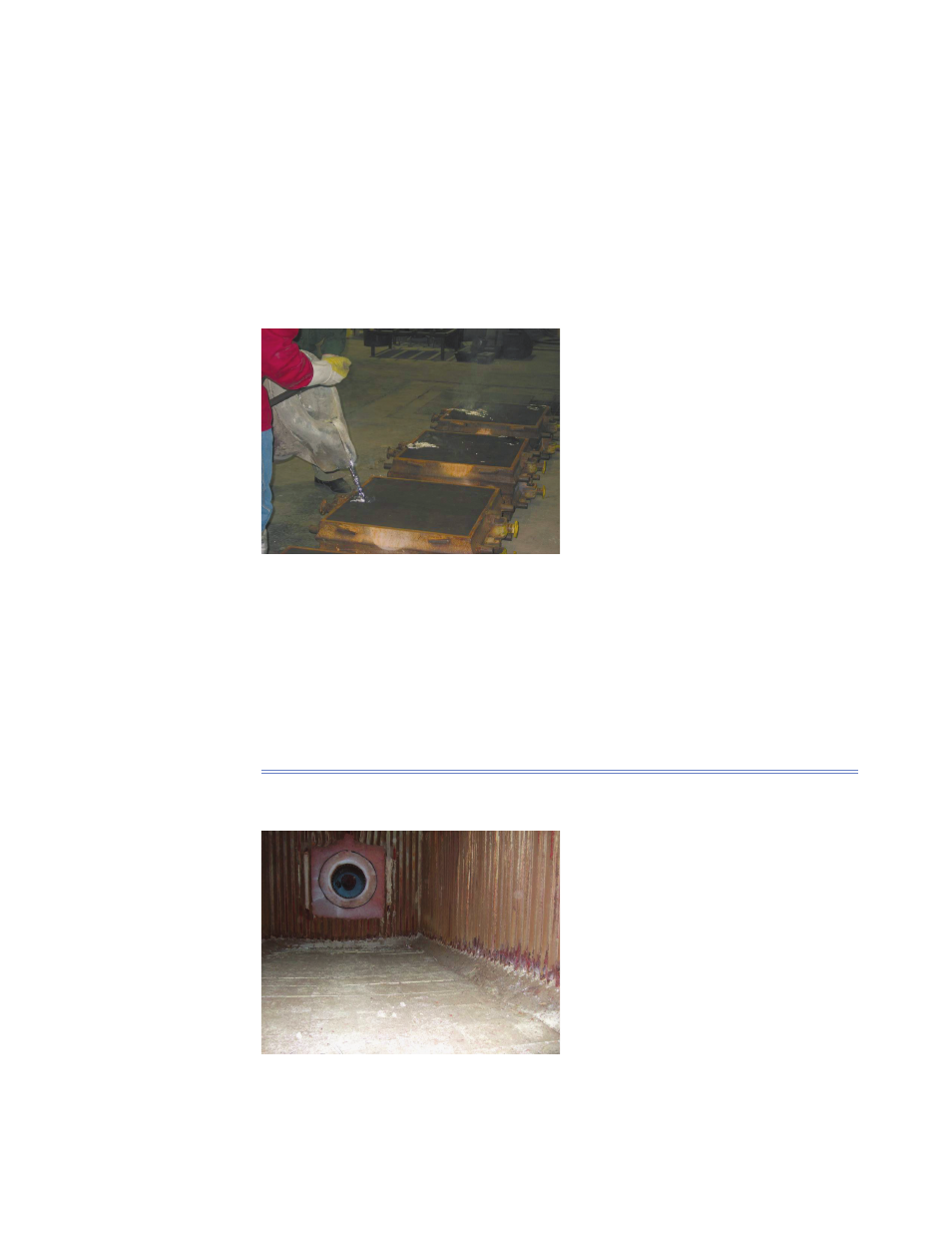Retrotec USACE User Manual
Page 250

D120 ENERGY & PROCESS ASSESSMENT PROTOCOL
Heating furnaces (Figure D188) need to be well insulated to avoid wasting
energy. Energy that is lost to the surrounding space due to poor insulation
means the furnace must work harder to supply heat to the parts or metal inside
them. A proper amount of insulation would result in the temperature of outer
surfaces of the furnace being no greater than 52 °C (125 °F). This is not only
an energy-saving concern, but a safety concern, to avoid skin burns. Surfaces
warmer than this temperature should be investigated for addition insulation.
D.7.7.3 Use of Oversized Equipment to Produce Small Numbers of
Parts (Waste)
Figure D189. Hand-pouring of a few molds to
obtain a small number of parts.
The production demands of industrial shops can change, but the equipment
is seldom replaced with more appropriately sized units. As a result, oversized
production equipment is used for necessary operations. This requires heating
up large furnaces for tempering a few parts or running a large dust collection
system to exhaust one of many machines (Figure D189). This approach results
in a waste of energy.
D.7.8 Furnace Operations
D.7.8.1 Dirty Burners (Ineffi ciency)
Figure D190. Looking at burner from inside a
heating chamber.
Furnaces and ovens use burners for the combustion of natural gas or fuel oil needed
to generate the required heat. These burners are designed to provide the proper
mix of oxygen (air) and fuel to obtain optimum combustion. If too much oxygen
is mixed with the fuel, excessive air is heated for the energy produced, which is
